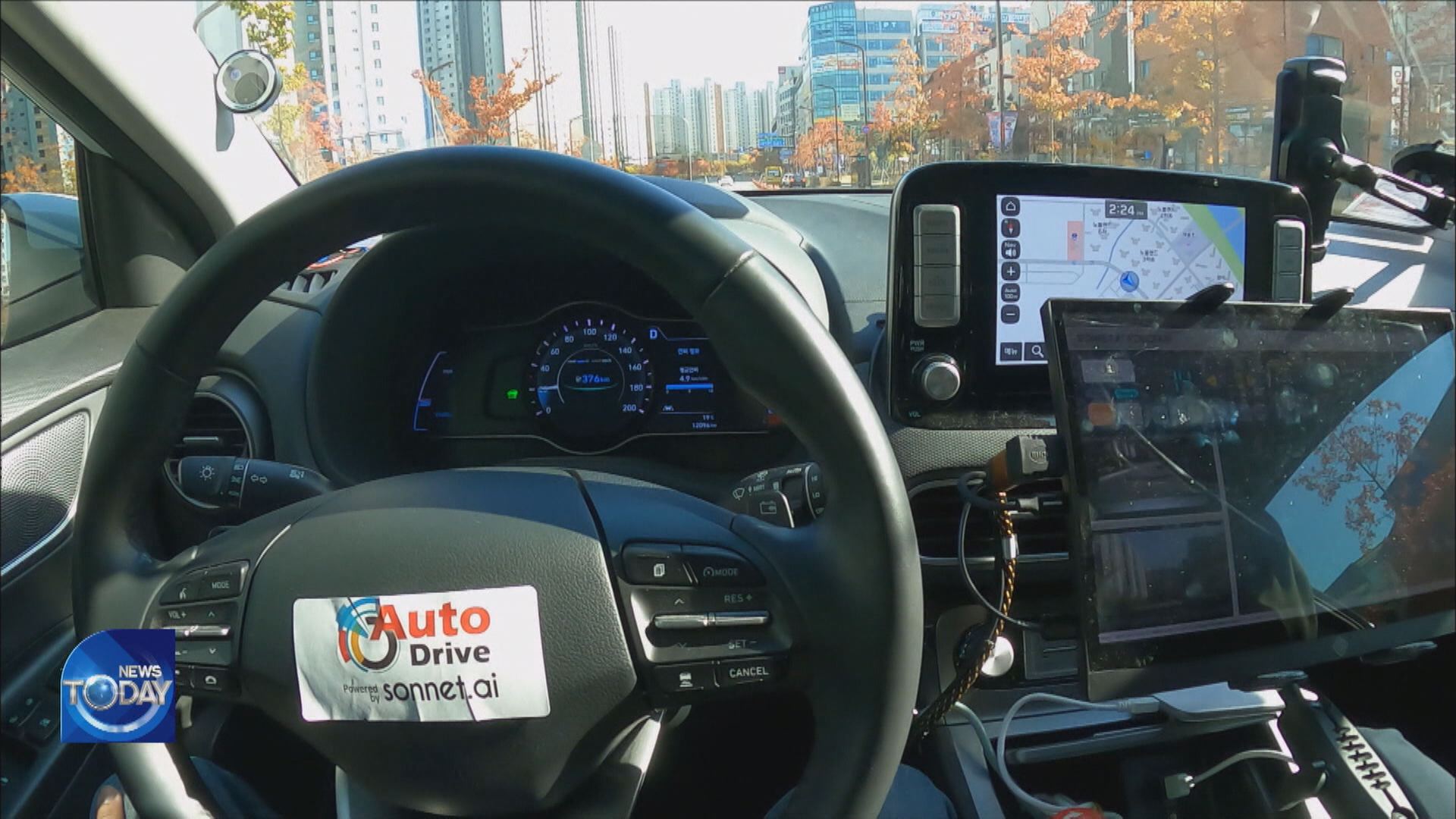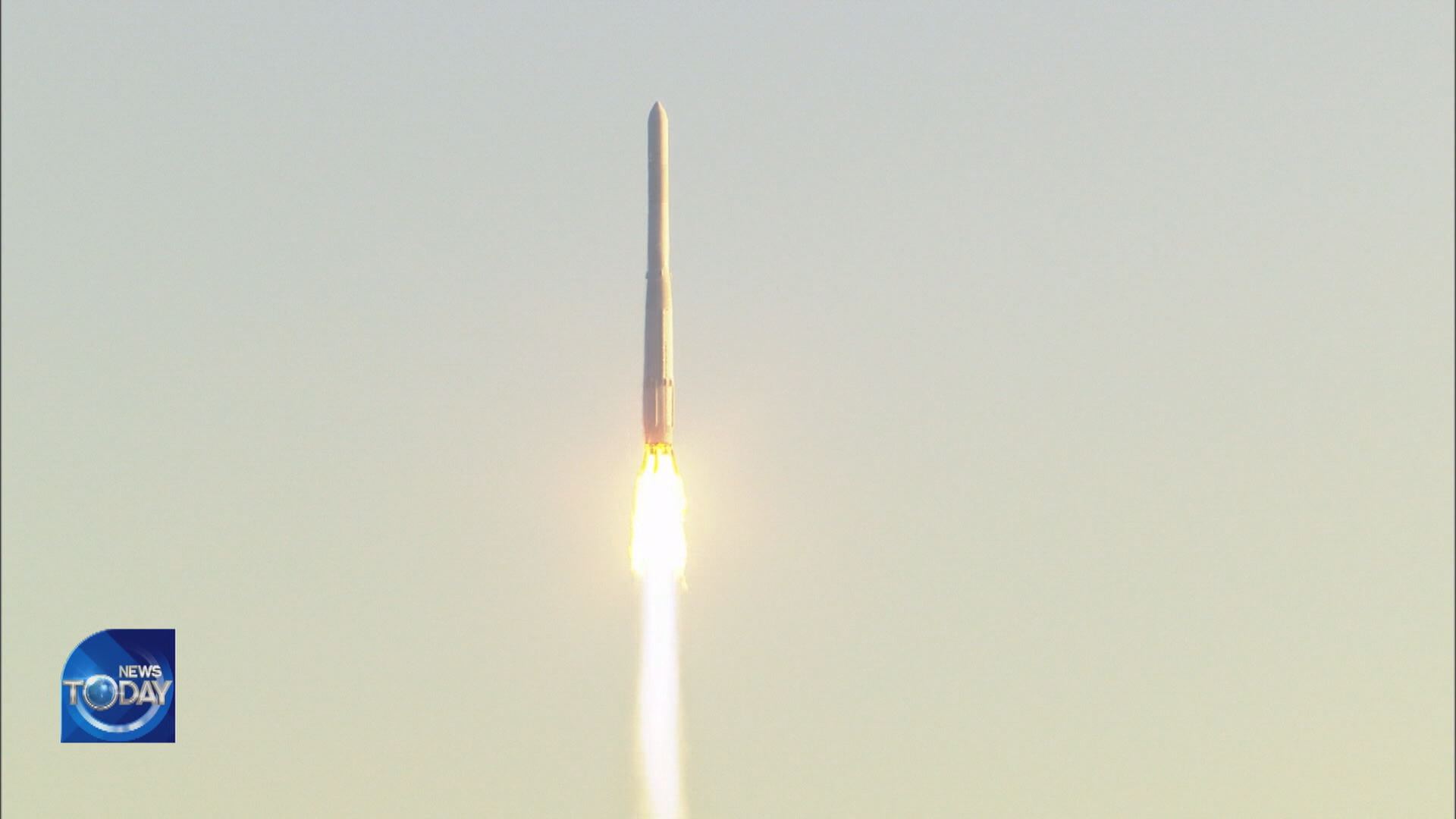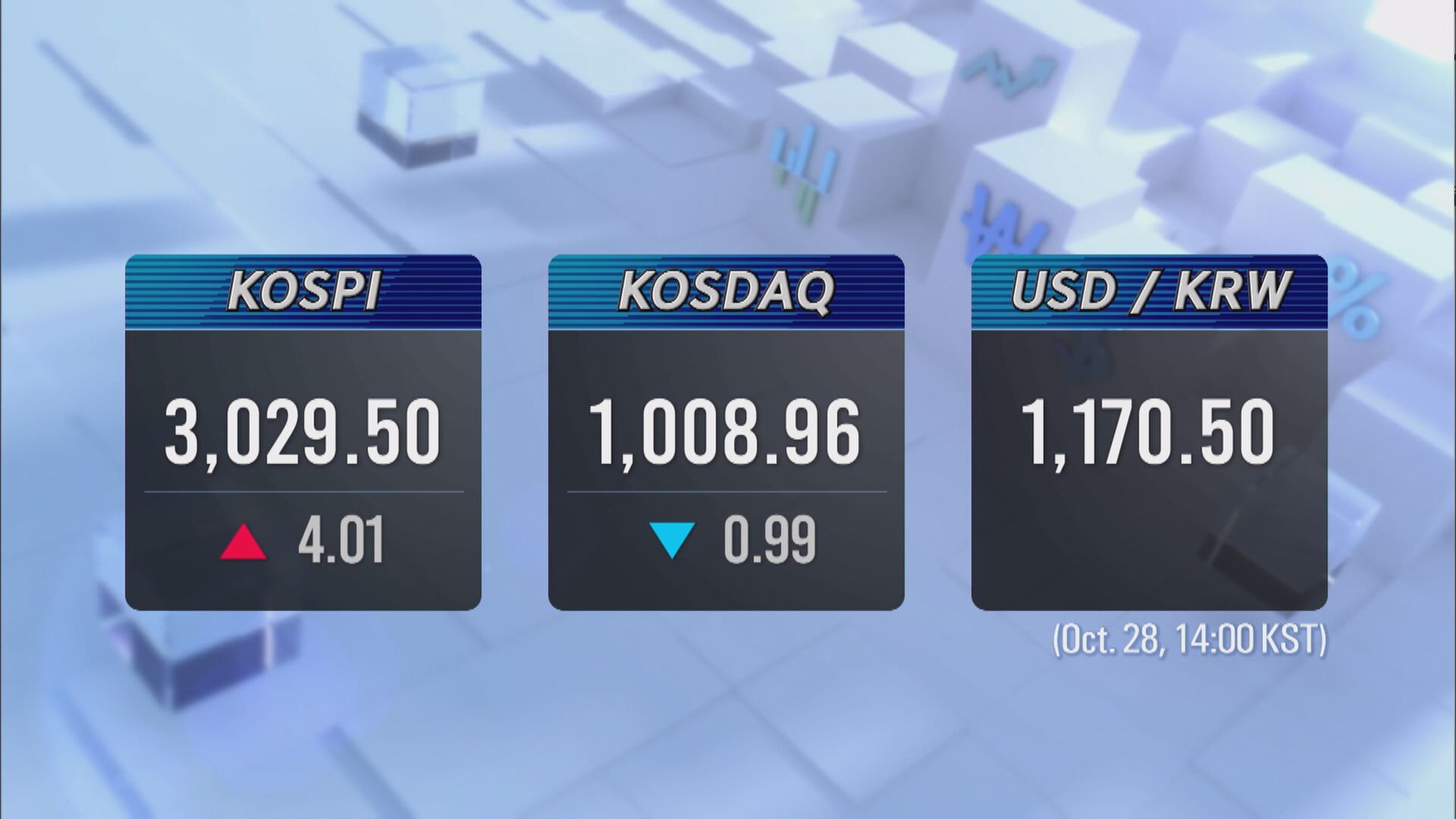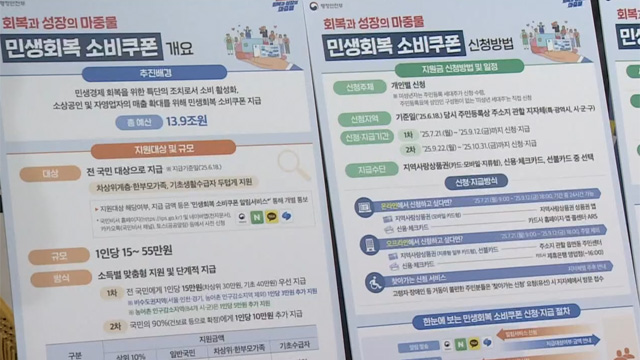TEST OF FULL-SELF DRIVING VEHICLE
입력 2021.10.28 (15:31)
수정 2021.10.28 (16:46)
읽어주기 기능은 크롬기반의
브라우저에서만 사용하실 수 있습니다.
[Anchor Lead]
Self-driving vehicles are classified into six levels, 0 to 5, according to what technologies they are based on. Level 4 of driving automation is known to be the first stage of a fully autonomous car. The first full self driving test has been conducted in Korea.
[Pkg]
A car is spotted zipping through a city road. The steering wheel in this car moves on its own. The car checks for pedestrians before turning right and moves carefully to avoid roadwork sites.
[Soundbite] Seo Da-bin(Autonomous Driving Researcher) : "Data on ongoing roadwork is sent by telecommunication devices to tell the car to avoid clashes in advance."
When a child suddenly appears on a crosswalk from behind an illegally parked car, the autonomous vehicle reduces speed and comes to a stop. When followed by an ambulance, it changes lanes to give way. This self-driving vehicle grasps traffic conditions using telecommunication signals sent from devices embedded in security cameras installed on the roads. As long as telecommunication is smooth, this Level-4 autonomous vehicle can move on its own without help from a human driver. It took two years for Korean researchers to develop it. The car has passed its first driving test that spanned 2km round-trip.
[Soundbite] Shin Jae-gon(Korea Automobile Testing and Research Institute) : "For example, when a car is about to turn right, it sends signals on potential hazards like black ice, pedestrians or accidents. This way, the autonomous cars can operate more safely."
However, there are still unresolved tasks such as driving in inclement weather conditions and at nighttime when telecommunication signals can be interrupted.
Self-driving vehicles are classified into six levels, 0 to 5, according to what technologies they are based on. Level 4 of driving automation is known to be the first stage of a fully autonomous car. The first full self driving test has been conducted in Korea.
[Pkg]
A car is spotted zipping through a city road. The steering wheel in this car moves on its own. The car checks for pedestrians before turning right and moves carefully to avoid roadwork sites.
[Soundbite] Seo Da-bin(Autonomous Driving Researcher) : "Data on ongoing roadwork is sent by telecommunication devices to tell the car to avoid clashes in advance."
When a child suddenly appears on a crosswalk from behind an illegally parked car, the autonomous vehicle reduces speed and comes to a stop. When followed by an ambulance, it changes lanes to give way. This self-driving vehicle grasps traffic conditions using telecommunication signals sent from devices embedded in security cameras installed on the roads. As long as telecommunication is smooth, this Level-4 autonomous vehicle can move on its own without help from a human driver. It took two years for Korean researchers to develop it. The car has passed its first driving test that spanned 2km round-trip.
[Soundbite] Shin Jae-gon(Korea Automobile Testing and Research Institute) : "For example, when a car is about to turn right, it sends signals on potential hazards like black ice, pedestrians or accidents. This way, the autonomous cars can operate more safely."
However, there are still unresolved tasks such as driving in inclement weather conditions and at nighttime when telecommunication signals can be interrupted.
■ 제보하기
▷ 카카오톡 : 'KBS제보' 검색, 채널 추가
▷ 전화 : 02-781-1234, 4444
▷ 이메일 : kbs1234@kbs.co.kr
▷ 유튜브, 네이버, 카카오에서도 KBS뉴스를 구독해주세요!
- TEST OF FULL-SELF DRIVING VEHICLE
-
- 입력 2021-10-28 15:31:52
- 수정2021-10-28 16:46:18

[Anchor Lead]
Self-driving vehicles are classified into six levels, 0 to 5, according to what technologies they are based on. Level 4 of driving automation is known to be the first stage of a fully autonomous car. The first full self driving test has been conducted in Korea.
[Pkg]
A car is spotted zipping through a city road. The steering wheel in this car moves on its own. The car checks for pedestrians before turning right and moves carefully to avoid roadwork sites.
[Soundbite] Seo Da-bin(Autonomous Driving Researcher) : "Data on ongoing roadwork is sent by telecommunication devices to tell the car to avoid clashes in advance."
When a child suddenly appears on a crosswalk from behind an illegally parked car, the autonomous vehicle reduces speed and comes to a stop. When followed by an ambulance, it changes lanes to give way. This self-driving vehicle grasps traffic conditions using telecommunication signals sent from devices embedded in security cameras installed on the roads. As long as telecommunication is smooth, this Level-4 autonomous vehicle can move on its own without help from a human driver. It took two years for Korean researchers to develop it. The car has passed its first driving test that spanned 2km round-trip.
[Soundbite] Shin Jae-gon(Korea Automobile Testing and Research Institute) : "For example, when a car is about to turn right, it sends signals on potential hazards like black ice, pedestrians or accidents. This way, the autonomous cars can operate more safely."
However, there are still unresolved tasks such as driving in inclement weather conditions and at nighttime when telecommunication signals can be interrupted.
Self-driving vehicles are classified into six levels, 0 to 5, according to what technologies they are based on. Level 4 of driving automation is known to be the first stage of a fully autonomous car. The first full self driving test has been conducted in Korea.
[Pkg]
A car is spotted zipping through a city road. The steering wheel in this car moves on its own. The car checks for pedestrians before turning right and moves carefully to avoid roadwork sites.
[Soundbite] Seo Da-bin(Autonomous Driving Researcher) : "Data on ongoing roadwork is sent by telecommunication devices to tell the car to avoid clashes in advance."
When a child suddenly appears on a crosswalk from behind an illegally parked car, the autonomous vehicle reduces speed and comes to a stop. When followed by an ambulance, it changes lanes to give way. This self-driving vehicle grasps traffic conditions using telecommunication signals sent from devices embedded in security cameras installed on the roads. As long as telecommunication is smooth, this Level-4 autonomous vehicle can move on its own without help from a human driver. It took two years for Korean researchers to develop it. The car has passed its first driving test that spanned 2km round-trip.
[Soundbite] Shin Jae-gon(Korea Automobile Testing and Research Institute) : "For example, when a car is about to turn right, it sends signals on potential hazards like black ice, pedestrians or accidents. This way, the autonomous cars can operate more safely."
However, there are still unresolved tasks such as driving in inclement weather conditions and at nighttime when telecommunication signals can be interrupted.
이 기사가 좋으셨다면
-
좋아요
0
-
응원해요
0
-
후속 원해요
0

















이 기사에 대한 의견을 남겨주세요.